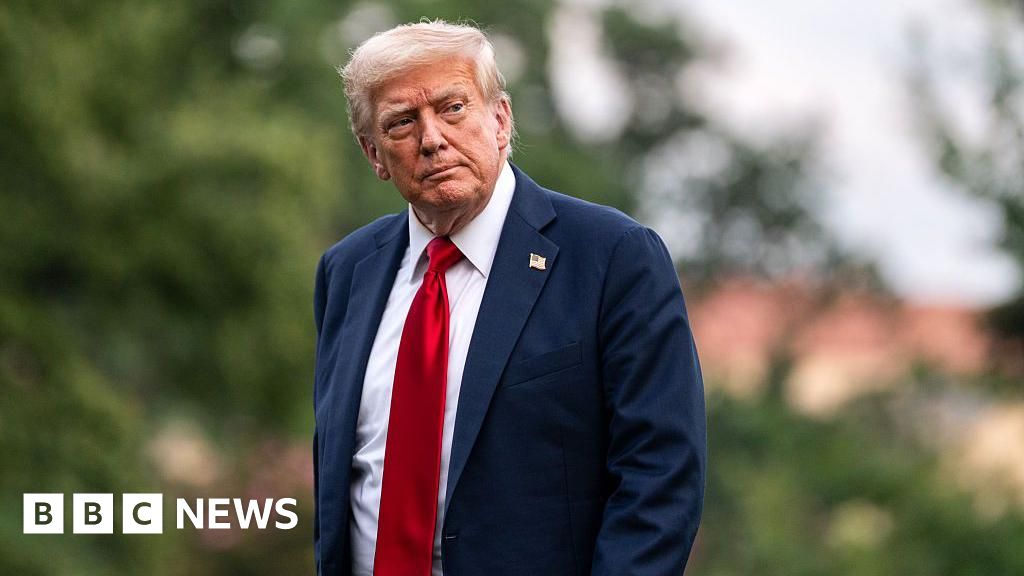ARTICLE AD BOX
Jose Kincinia De Jesus Villagran-Perez left Guatemala in early February and made it to Reynosa, just south of the U.S. border — where he sat and waited. And waited.
He later told Border Patrol agents there just weren’t enough people for the smugglers to make a run across the border. They finally cobbled together a group of four Guatemalans sent across and quickly nabbed.
What President Trump has done at the border is almost unfathomable, and Mr. Villagran-Perez’s case gets to the heart of it.
A year ago in February, more than 23,000 Guatemalans made a run at the southern border. Last month, agents reported fewer than 1,500.
It’s the same across all demographics.
Last year in February, agents caught 106 Romanians. This year, they encountered only one last month. Venezuelans, Mexicans, Chinese, Haitians — all have seen their numbers plummet.
The drop has had ripple effects across the hemisphere. Migrants making their way up the spine of the Americas are turning around mid-journey. In the U.S., deportation officers who had been assigned to help process people at the border are now back in the country’s interior, helping arrest and deport people.
And the Mexican cartels are taking a huge hit to their incomes, according to experts who say the smugglers are coming to grips with a new foe in Mr. Trump.
“The cartels have got to be feeling boxed in like never before,” said Todd Bensman, a border expert at the Center for Immigration Studies. “I think they’re going to lash out. That’s what they do. If past is prologue, they’re going to lash out violently, I think sooner rather than later.”
Cartels already have raised smuggling prices to try to make up some of the difference.
Agents didn’t record in court documents how much Mr. Villagran-Perez paid to be smuggled in. Another Guatemalan caught with him said he paid 130,000 quetzals, or nearly $17,000, for his journey.
That has become a typical fee for Central Americans, according to The Washington Times’ database of border smuggling cases. Some are paying nearly $30,000. Mexicans now regularly pay $10,000, and some pay more than double that rate. One Chinese migrant nabbed in California reported paying $75,000, though $20,000 to $40,000 is more typical.
Those are significantly higher, on average, than rates the cartels charged a year ago.
“It’s a business,” said Emilio Gonzalez, head of U.S. Citizenship and Immigration Services in the Bush administration. “We gave the cartels and every other nefarious group of people, in addition to airlines, an opportunity to make zillions of dollars.”
The plummeting border numbers have other effects.
Border Patrol agents detected no crossings by people on the terrorist watch list. That’s the first time since the government began reporting monthly figures in early 2022.
The number of migrants with known criminal records detected also fell, and so did suspected gang members. Border Patrol agents reported encountering just a single Tren de Aragua member in February, down from about four a month last fall, and just two MS-13 members, down from about eight a month last fall.
Mr. Trump’s defenders say his early success at the border also punctures President Biden’s arguments that the border chaos was the result of international forces spurring people to leave their homes and couldn’t be solved without more action from Congress.
“This proves that it could have been stopped and they had no interest in stopping it,” Mr. Gonzalez said.
Border Patrol agents nabbed nearly 250,000 illegal immigrants at the southern border in December 2023, averaging about 50,000 a month for the last six months of the Biden administration. In February, that fell to fewer than 8,400.
A little more than half of those, 4,237, were Mexicans. More than 70,000 Mexicans were reported during some months of the Biden administration.
Guatemalans were second, and Hondurans were third.
But it’s the non-traditional sending countries where things have really changed.
In December 2023, the peak month for the Biden migrant surge, nearly 43,000 Cubans were caught at the U.S.-Mexico border. Last month, it was 107 — a 99.7% drop. Venezuela went from nearly 47,000 in the peak month to 125 — a 99.7% drop. Colombians fell from 17,572 to 126 — a 99.3% drop.
The gains go beyond the southwestern border.
U.S. Customs and Border Protection, which means the airports, seaports and official land border crossings, shut down legally iffy “parole” programs initiated by Mr. Biden.
That cut the number of unauthorized migrants at ports of entry from more than 100,000 a month last summer to fewer than 20,000 in February.
Panama, a chokepoint on the path for migrants from South America, said it detected just 408 people traversing the Darien Gap, the border between it and Colombia, in February. That’s down more than 75% from January and more than 80% from the average month in 2024.
InSight Crime said that has upended the smuggling economy in that region, disrupting the income stream of the Autodefensas Gaitanistas de Colombia, a crime syndicate that used to make tens of millions of dollars a year from migrant smuggling.
InSight Crime said the AGC is turning to other illegal activities, including extorting cattle ranchers.
In Mexico, the cartels are also facing serious pressure.
Mr. Trump ordered some of them to be declared terrorist organizations, denting their ability to move money. It also could crimp their relations with corrupt Mexican officials, who now have to worry about being accused of delivering material support to terrorists if they cooperate with the cartels.
The U.S. is also making spy flights to report on the cartels’ activities, bringing intelligence that Mexican officials couldn’t have dreamed of in years part.
Mr. Bensman said he expects the cartels to increase drug smuggling to try to make up for the lost migrant smuggling revenue.
Victor Manjarrez Jr., a former senior official with the U.S. Border Patrol who now teaches at the University of Texas at El Paso, said he also expects more drug smuggling, as well as renewed efforts by the cartels to extort legitimate businesses in Mexico.
“The cartels never lose money in the long run,” Mr. Manjarrez said.

 3 months ago
69
3 months ago
69








 English (US) ·
English (US) ·